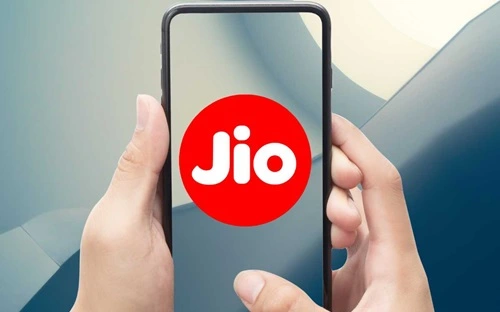Reliance Jio, a subsidiary of Reliance Industries Limited (RIL), has redefined India’s telecommunications and digital services landscape since its launch in 2016. With its disruptive pricing strategy, cutting-edge infrastructure, and vast service offerings, Jio has not only transformed how Indians consume data but also laid the groundwork for a digital revolution. As of 2024, Jio is the largest telecom operator in India by market share, with over 450 million subscribers.
In this article, we analyze Reliance Jio’s business model, revenue streams, and the strategies that drive its success in the telecom and digital services ecosystem.
Overview of Reliance Jio’s Business Model

Reliance Jio operates on a multi-layered business model that integrates telecommunications, digital services, and technology solutions. While its core offering is affordable telecom services, Jio has diversified into content platforms, enterprise solutions, and smart devices, creating a comprehensive digital ecosystem.
Key Features of Reliance Jio’s Business Model:
- Freemium Strategy:
- Jio initially disrupted the market with free data and voice services to onboard millions of users, later transitioning to affordable prepaid and postpaid plans.
- Digital Ecosystem:
- Jio offers a wide range of digital services, including JioCinema, JioSaavn, JioCloud, and JioMeet, to enhance customer stickiness.
- Vertical Integration:
- From telecom infrastructure to retail and content creation, Jio controls every layer of the value chain, reducing costs and improving efficiency.
- Massive Scale:
- Leveraging Reliance Industries’ resources, Jio has rapidly scaled its operations, building one of the world’s largest 4G networks.
How Does Reliance Jio Earn Money?
Reliance Jio generates revenue through multiple streams, leveraging its telecom services, digital platforms, and enterprise solutions. Here’s how Jio earns money:
a. Mobile and Data Services
- Core Revenue Driver:
- Jio earns a significant portion of its revenue from prepaid and postpaid mobile plans, which include unlimited voice calls and high-speed data.
- It also monetizes add-on plans, such as extra data packs and international roaming services.
- Affordable Pricing:
- By offering affordable data plans, Jio attracts a large user base, generating high volumes of revenue despite lower average revenue per user (ARPU).
b. Home Broadband (JioFiber)
- JioFiber provides high-speed broadband services for households and small businesses. Revenue is generated through:
- Monthly subscription fees for broadband, IPTV, and landline services.
- Premium plans that bundle OTT (Over-the-Top) content from platforms like Netflix, Amazon Prime, and Disney+ Hotstar.
c. Content Platforms
- Jio monetizes its digital content offerings by bundling them with its telecom plans and through potential advertising revenue. Key platforms include:
- JioCinema: Streaming movies, shows, and exclusive content.
- JioSaavn: A music streaming platform offering both free (ad-supported) and premium subscription tiers.
- JioNews: Aggregates news from multiple sources, attracting advertising revenue.
- Content platforms enhance customer retention while opening opportunities for advertising and partnerships.
d. Enterprise Solutions
- Reliance Jio offers enterprise connectivity solutions, including high-speed internet, IoT (Internet of Things) services, and cloud-based solutions for businesses.
- Revenue is generated through:
- Customized packages for corporates and SMEs.
- Collaboration tools like JioMeet for video conferencing.
e. IoT and Smart Devices
- Jio has ventured into the Internet of Things (IoT) space, offering solutions for smart homes, connected vehicles, and industrial automation.
- The company also sells affordable smart devices under its JioPhone brand, contributing to revenue through:
- Device sales.
- Bundled prepaid plans exclusive to JioPhone users.
f. JioMart Integration
- Through JioMart, Reliance Jio integrates its telecom and digital services with Reliance Retail’s e-commerce platform. Revenue streams include:
- Commission from sellers.
- Digital payment solutions integrated into JioMart.
- Cross-selling Jio plans and devices.
g. Advertising Revenue
- Jio generates advertising revenue from its digital platforms, including JioCinema, JioNews, and JioSaavn, where brands pay for visibility and targeted ads.
- With access to vast amounts of consumer data, Jio enables hyper-targeted advertising campaigns for brands.
h. Partnerships and Licensing
- Jio has partnered with global tech giants like Facebook (now Meta), Google, and Microsoft to develop and integrate new technologies.
- These partnerships bring in investment and collaboration revenue. For example:
- Google and Meta’s investments in Jio Platforms come with commitments for technology integration and future monetization.
i. Cloud and Data Center Services
- Reliance Jio offers cloud storage and computing services through partnerships with companies like Microsoft Azure.
- Revenue is generated by providing scalable, cost-effective cloud solutions for businesses and startups.
j. Wholesale Services
- Jio leases its network infrastructure to other telecom operators and internet service providers (ISPs), earning revenue through wholesale bandwidth and spectrum sharing agreements.
Why Reliance Jio’s Model Works
Reliance Jio’s success lies in its ability to disrupt the telecom sector and integrate multiple revenue streams into a unified ecosystem. Here’s why its model works:
a. Affordable Pricing
- Jio’s pricing strategy has democratized data access in India, enabling even rural users to come online and boosting subscriber growth.
b. Digital Ecosystem
- By bundling telecom services with content platforms and apps, Jio locks in customers and ensures higher average revenue per user (ARPU).
c. Vertical Integration
- Jio controls the entire value chain—from infrastructure to content—ensuring cost efficiency and operational control.
d. Massive Infrastructure
- Reliance Jio’s 4G network infrastructure is one of the most extensive globally, enabling the company to handle high data consumption volumes.
e. Scale and Synergies
- Leveraging Reliance’s retail and digital businesses, Jio creates synergies that enhance customer value and unlock cross-selling opportunities.
Financial Performance
Reliance Jio’s aggressive growth strategy and diversified revenue streams have translated into strong financial performance:
Revenue Growth
- Reliance Jio reported annual revenue of over ₹90,000 crores in FY 2023, driven by robust subscriber growth and rising data consumption.
Subscriber Base
- With over 450 million active users, Jio is the largest telecom operator in India by subscribers.
ARPU (Average Revenue Per User)
- Despite being affordable, Jio has managed to maintain competitive ARPU levels through premium plans, add-ons, and content bundling.
Valuation
- Jio Platforms, which includes all of Jio’s digital and telecom businesses, is valued at over $100 billion, making it one of India’s most valuable companies.
Challenges and Opportunities
Challenges
- Price Wars:
- Intense competition with Airtel and Vodafone Idea can pressure margins.
- High Capital Expenditure:
- Building and maintaining infrastructure, including 5G rollout, requires significant investment.
- Regulatory Risks:
- Policy changes in telecom pricing and data privacy laws could impact operations.
Opportunities
- 5G Services:
- Jio’s 5G rollout can unlock new revenue streams, such as ultra-fast broadband and IoT solutions.
- Rural Penetration:
- Expanding its reach in underserved rural areas offers untapped growth potential.
- Global Expansion:
- Exporting Jio’s digital ecosystem model to emerging markets can drive international growth.
- Enterprise Market:
- Offering advanced cloud and IoT solutions to enterprises can boost revenue from the B2B segment.
Future Prospects
Reliance Jio is well-positioned to maintain its dominance in India’s telecom and digital services market. Key focus areas include:
- Expanding its 5G network and leveraging it for IoT and smart city solutions.
- Strengthening its digital ecosystem with more exclusive content and advanced applications.
- Increasing monetization of Jio platforms through advertising, subscriptions, and enterprise solutions.
Conclusion
Reliance Jio’s business model exemplifies innovation, scale, and adaptability. By combining affordable telecom services with a comprehensive digital ecosystem, Jio has disrupted the market and created a sustainable revenue model. With ongoing investments in technology, 5G, and enterprise solutions, Reliance Jio is poised to remain a dominant force in India’s telecom and digital landscape while exploring new growth opportunities globally.

